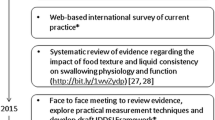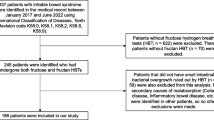Abstract
Purpose of Review
Over the last few decades, there have been remarkable strides in endoscopy and radiological imaging that have advanced gastroenterology. However, the management of neurogastroenterological disorders has lagged behind, in part handicapped by the use of catheter-based manometry that is both non-physiological and uncomfortable. The advent of capsule technology has been a game changer for both diagnostic and therapeutic applications.
Recent Findings
Here, we discuss several capsule devices that are available or under investigation. There are three technologies that are FDA approved. Wireless motility capsule measures pH and pressure and provides clinically impactful information regarding gastric, small intestine and colonic transit, without radiation that has been demonstrated to guide management of gastroparesis, dyspepsia and constipation. Wireless ambulatory pH monitoring capsule is currently the gold standard for assessing gastroesophageal acid reflux. In the therapeutics arena, an orally ingested vibrating capsule has been recently FDA approved for the treatment of chronic constipation, supported by a robust phase 3 clinical trial which showed significant improvement in constipation symptoms and quality of life. There are several capsules currently under investigation. Smart capsule bacterial detection system and Capscan® are capsules that can sample fluid in the small or large bowel and provide microbiome analysis for detection of small intestinal bacterial (SIBO) or fungal overgrowth (SIFO). Another investigational gas sensing capsule analyzing hydrogen, CO2, volatile fatty acids and capsule orientation, can measure regional gut transit time and luminal gas concentrations and assess gastroparesis, constipation or SIBO. Therapeutically, other vibrating capsules are in development.
Summary
Innovations in capsule technology are poised to transform our ability to investigate gut function physiologically, and non-invasively deliver targeted treatment(s), thereby providing both accurate diagnostic information and luminally-directed, safe therapy.
Similar content being viewed by others
References
Papers of particular interest, published recently, have been highlighted as: •• of major importance
•• Rao SSC, Camilleri M, Hasler WL, et al. Evaluation of gastrointestinal transit in clinical practice: position paper of the American and European Neurogastroenterology and Motility Societies. Neurogastroenterol Motil. 2011;23(1):8–23. https://doi.org/10.1111/j.1365-2982.2010.01612.x. The American and European Neurogastroenterology and Motility Societies published guidelines on the methods of assessing transit including indications for use of the wireless capsule motility capsule. This overview provides background on the performance characteristics, clinical indications, strengths and weaknesses of the wireless motility capsule in comparison to traditional diagnostics such as scintigraphy and radio-opaque marker studies.
Rao SSC, Lembo A, Chey WD, Friedenberg K, Quigley EMM. Effects of the vibrating capsule on colonic circadian rhythm and bowel symptoms in chronic idiopathic constipation. Neurogastroenterol Motil. 2020;32(11): e13890. https://doi.org/10.1111/nmo.13890.
Kuo B, McCallum RW, Koch KL, et al. Comparison of gastric emptying of a nondigestible capsule to a radio-labelled meal in healthy and gastroparetic subjects. Aliment Pharmacol Ther. 2008;27(2):186–96. https://doi.org/10.1111/j.1365-2036.2007.03564.x.
Rao SSC, Kuo B, McCallum RW, et al. Investigation of colonic and whole-gut transit with wireless motility capsule and radiopaque markers in constipation. Clin Gastroenterol Hepatol. 2009;7(5):537–44. https://doi.org/10.1016/j.cgh.2009.01.017.
Hasak S, Yadlapati R, Altayar O, et al. Prolonged wireless pH monitoring in patients with persistent reflux symptoms despite proton pump inhibitor therapy. Clin Gastroenterol Heptol. 2020;18(13):2912–9. https://doi.org/10.1016/j.cgh.2020.01.031.
•• Rao SSC, Quigley EMM, Chey WD, et al. Randomized placebocontrolled phase 3 trial of vibrating capsule for chronic constipation. Gastroenterology. 2023;164(7):1202–10.E6. https://doi.org/10.1053/j.gastro.2023.02.013. This phase 3 randomizedcontrolled trial showed that vibrating capsule, a first, nonpharmacological, therapeutic option for treatment of constipation, was safe and effective, and superior to sham capsule and improved bowel symptoms, stool characteristics and quality of life.
Rao SSC, Moshiree B, et al. Evaluation of Smart Capsule Bacterial Detection System (SCBDS) assay and duodenal culture in subjects suspected of SIBO and undergoing upper endoscopy: interim analysis: S1282. Am J Gastroenterol. 2020;115:S644. https://doi.org/10.14309/01.ajg.0000707176.78864.91
Thwaites PA, Yao CK, et al. Comparison of gastrointestinal landmarks using the gas-sensing capsule and wireless motility capsule. Aliment Pharmacol Ther. 2022;56(9):1337–48. https://doi.org/10.1111/apt.17216.
Zhu JH, Qian YY, Pan J, et al. Efficacy and safety of vibrating capsule for functional constipation (VICONS): a randomized, double-blind, placebo-controlled, multicenter trial. EClinical/Medicine. 2022;47: 101407. https://doi.org/10.1016/j.eclinm.2022.101407.
Rao SSC, Mysore K, Attaluri A, Valestin J. Diagnostic utility of wirelity capsule in gastrointestinal dysmotility. J Clin Gastroenterol. 2011;45(8):684–90. https://doi.org/10.1097/MCG.0b013e3181ff0122.
Rozov-Ung I, Mreyoud A, Moore J, et al. Detection of drug effects on gastric emptying and contractility using a wireless motility capsule. BMC Gastroenterol. 2014;14:2. https://doi.org/10.1186/1471-230X-14-2.
Hasler WL, Rao SSC, McCallum RW, et al. Influence of gastric emptying and gut transit testing on clinical management decisions in suspected gastroparesis. Clin Transl Gastroenterol. 2019;10(10): e00084. https://doi.org/10.14309/ctg.0000000000000084.
So D, Yap CK, Gill PA, Thwaites PA, et al. Detection of changes in regional colonic fermentation in response to supplementing a low FODMAP diet with dietary fibres by hydrogen concentrations, but not by luminal pH. Aliment Pharmacol Ther. 2023;58(4):417–28. https://doi.org/10.1111/apt.17629.
Pandolfino JE, Kwiatek MA. Use and utility of the BravoTM pH capsule. J Clin Gastroenterol. 2008;42:571–8. https://doi.org/10.1097/MCG.oBo13E31815bb602.
Sweis R, Fox M, Anggiansah A, et al. Prolonged, wireless pH-studies have a high diagnostic yield in patients with reflux symptoms and negative 24-hour catheter-based pH-studies. Neurogastroenterol Motil. 2011;23:419–26. https://doi.org/10.1111/j.1365-2982.2010.01663.x.
Hakanson BS, Berggren P, Granqvist S, et al. Comparison of wireless 48-hour (Bravo) versus traditional ambulatory 24-hour esophageal pH monitoring. Scan J Gasroenterol. 2009;44(3):276–83. https://doi.org/10.1080/00365520802588109.
•• Wenner J, Johnsson F, Johansson J, et al. Wireless esophageal pH monitoring is better tolerated than the catheter-based technique: results from a randomized cross-over trial. Am J Gastroenterol. 2007;102(2):239–45. https://doi.org/10.1111/j.1572-0241.2006.00939.x. This randomized cross-over trial illustrated that wireless pH monitoring resulted in less interference in daily activities, more normal daily oral intake and less adverse symptoms, thus is preferred over catheter-based monitoring.
Bradley A, Crowell M, DiBiase J, et al. Comparison of the impact of wireless versus catheter-based pH-metry on daily activities and study related symptoms. J Clin Gastroenterol. 2011;45(2):100–6. https://doi.org/10.1097/MCG.0b013e3181e5d32a.
Mayeli A, Zoubi OA, White EJ, et al. Parieto-occipital ERP indicators of gut mechanosensation in humans. Nat Commun. 2023;14(1):3398. https://doi.org/10.1038/s41467-023-39058-4.
Shalon Dari, Culver RN, et al. Profiling the human intestinal environment under physiological conditions. Nature. 2023;617(7961):581–91. https://doi.org/10.1038/s41586-023-05989-7.
Quinn RA, Martin C, Guzior DV. A multi-trip through the human gut. Nat Metab. 2023;5(5):720–1. https://doi.org/10.1038/s42255-023-00773-3.
Lee SN, Stork C, Smith J, et al. Development of ex-vivo and in vivo models to assess the performance of an oral biotherapeutic delivery system (OBDS) device. Poster Presented at: Controlled Release Society Annual Meeting, July 13–14, 2022, Montreal, Canada.
Lee SN, Sandefer E, Stork C, et al. A scintigraphic study to evaluate the safety, tolerability, and functions of a drug delivery system (DDS) device in healthy subjects in fasted state. Am J Gastroenterol. 2022;117(10S):e766–7.
Stork C, Page RC, Thomas S, et al. A scintigraphic study to evaluate the localization and delivery function of a Drug Delivery System (DDS) device in patients with active ulcerative colitis (UC) in a fasted state. Am J Gastroenterol. 2022;117(10S):e768–9. https://doi.org/10.14309/01.ajg.0000860884.74139.d1.
Rahimian PJ, Lee SN, Singh S, et al. A novel method for collecting microbiome species. Gastroenterology. 2022;162(7):S-1008−9. https://doi.org/10.1016/S0016-5085(22)62392-8.
Yu J, Qian YY, He CH, et al. Safety and efficacy of a new smartphone-controlled vibrating capsule on defecation in Beagles. Sci Rep. 2017;7(1):2841. https://doi.org/10.1038/s41598-017-02844-4.
Acknowledgements
Dr Rao was supported in part by NIH grant DK115572-02, RO1 DK 121003-05 and grant DK 13148801. We sincerely acknowledge the expert secretarial assistance of Mrs. Helen Smith.
Author information
Authors and Affiliations
Contributions
Irene Sonu – Manuscript concept and design, literature review, manuscript preparation, tables and figures and critical revision.
Sun Jung Oh – Manuscript concept and design, literature review, manuscript preparation, tables and figures and critical revision.
Satish Rao – Manuscript concept and design, data analysis, manuscript preparation, overall supervision and critical revision.
All authors have approved the final version of the manuscript submitted.
Corresponding author
Ethics declarations
Conflict of Interest
Dr Rao serves as an advisor and has received research grant support from Medtronic (Smartpill), Vibrant Ltd (Vibrating capsule), Atmo biosciences (Atmo capsule), Biora Therapeutics (SCBDS capsule). Dr Sonu and Dr Oh declare no conflicts of interests with this study.
Human and Animal Rights and Informed Consent
This article does not contain any studies with human or animal subjects performed by any of the authors.
Additional information
Publisher's Note
Springer Nature remains neutral with regard to jurisdictional claims in published maps and institutional affiliations.
This article is part of the Topical Collection on Neurogastroenterology and Motility Disorders of the Gastrointestinal Tract
Rights and permissions
Springer Nature or its licensor (e.g. a society or other partner) holds exclusive rights to this article under a publishing agreement with the author(s) or other rightsholder(s); author self-archiving of the accepted manuscript version of this article is solely governed by the terms of such publishing agreement and applicable law.
About this article
Cite this article
Sonu, I., Oh, S.J. & Rao, S.S.C. Capsules for the Diagnosis and Treatment of Gastrointestinal Motility Disorders- A Game Changer. Curr Gastroenterol Rep (2024). https://doi.org/10.1007/s11894-024-00926-8
Accepted:
Published:
DOI: https://doi.org/10.1007/s11894-024-00926-8




